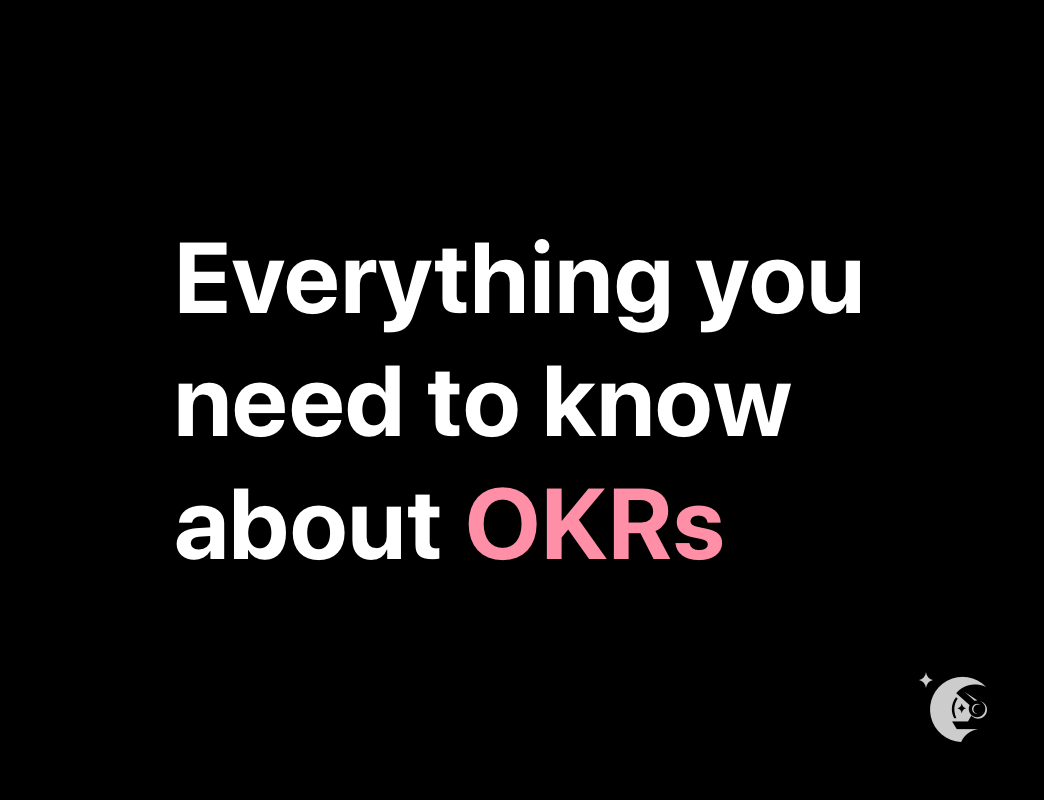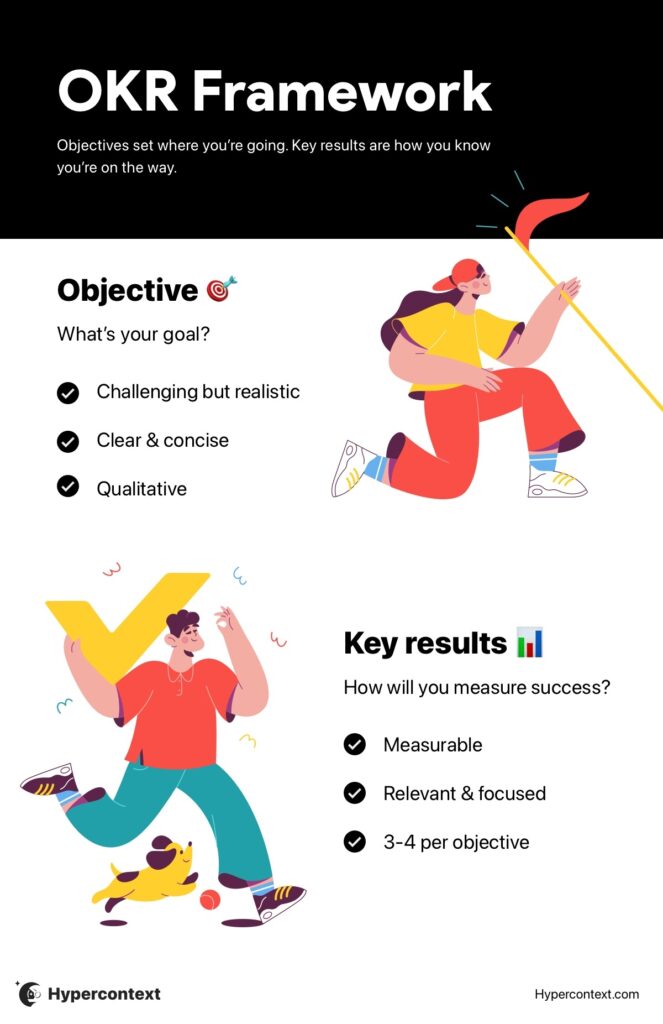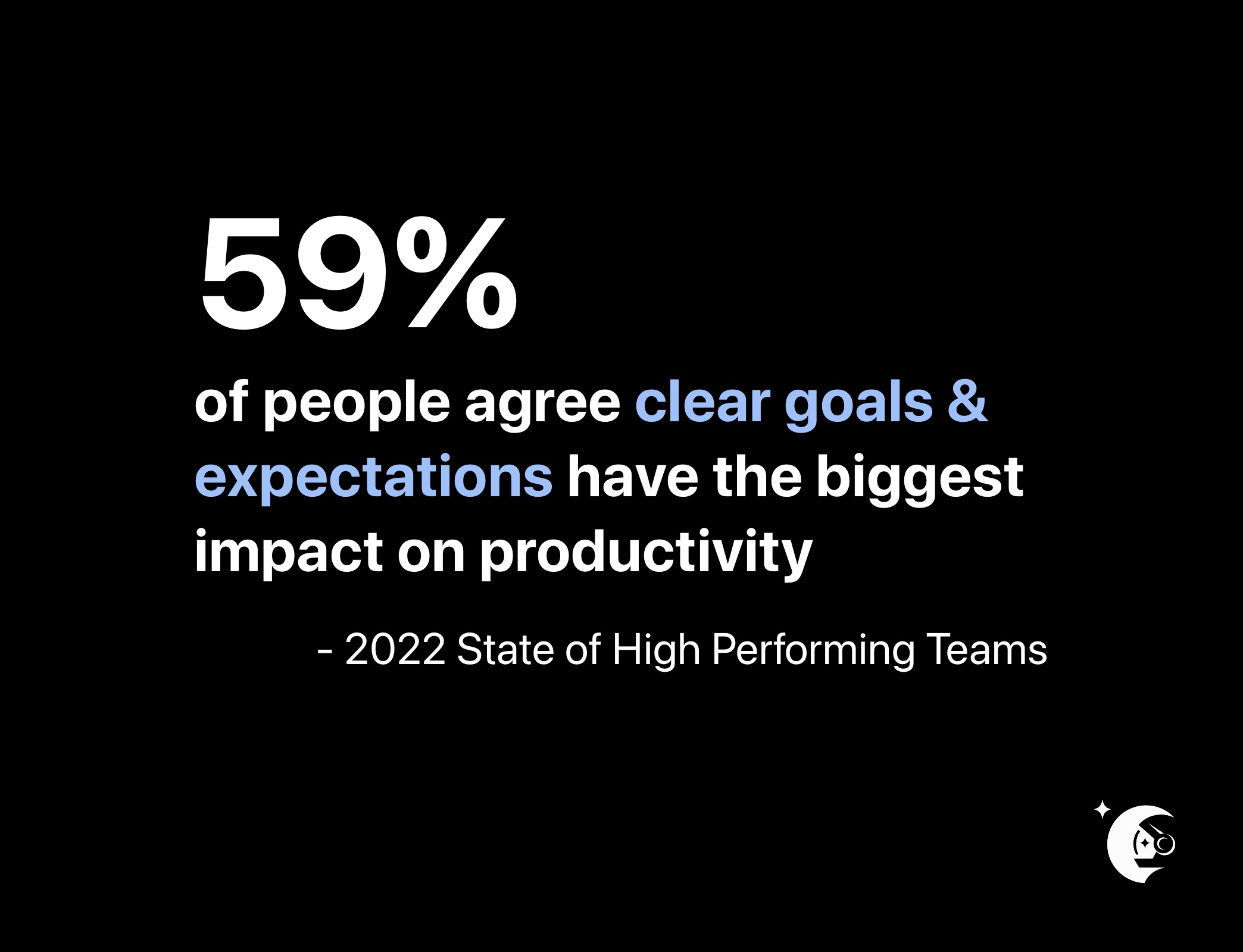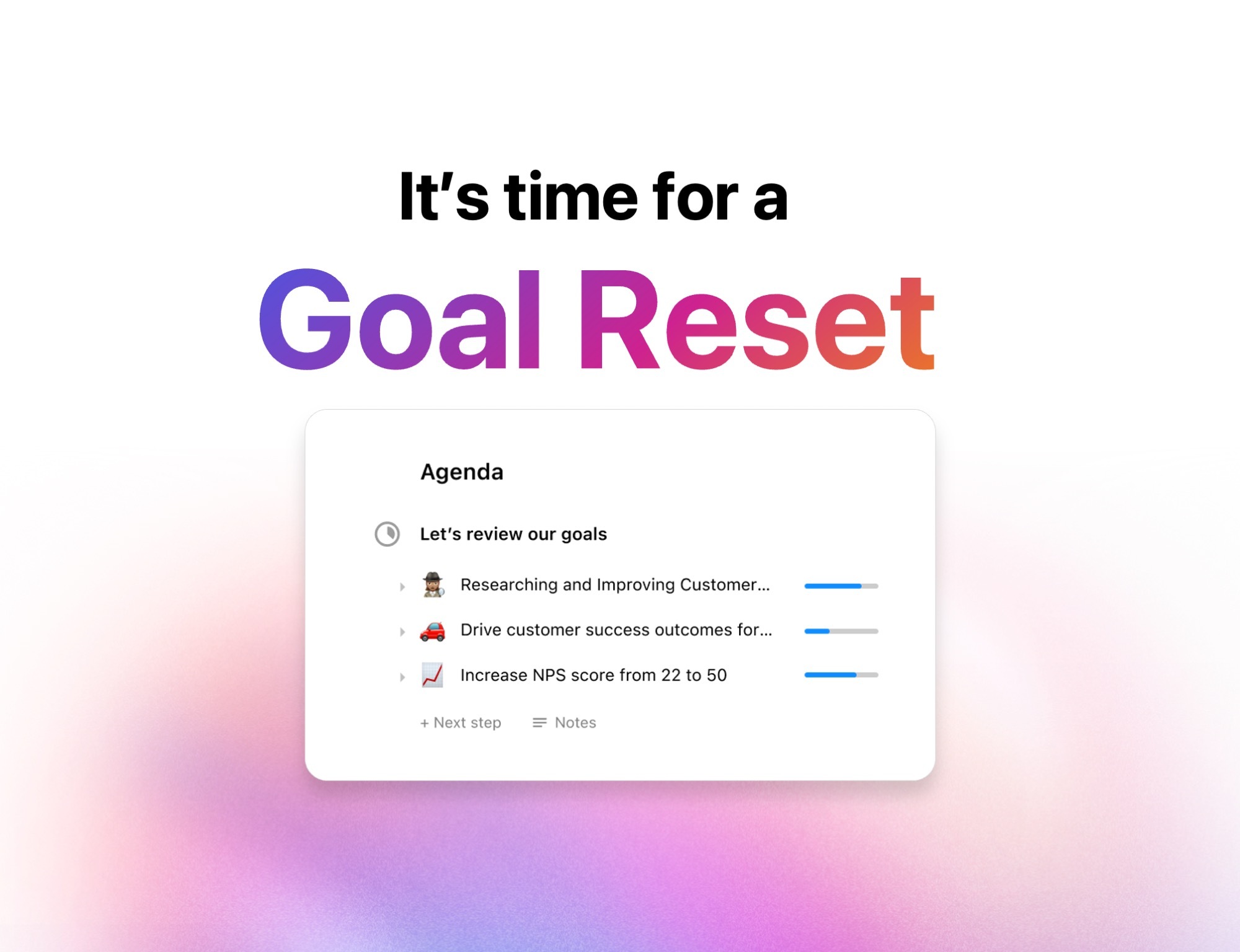What are OKRs? (and why you need to know about them)
11 min readEveryone's using OKRs. What's all the fuss about? In this article we review the widely used goal setting framework and why it's so great.

It’s often more challenging to choose where to start than it is getting started. We’ve all experienced some level of analysis paralysis when trying to decide on tools, processes, or where to begin on a project.
One area that we’ve seen trip up great managers time and time again is goal-setting. We all know cliches like “if you fail to plan, you plan to fail” — but in practice it can be more challenging than it sounds. With countless different goal setting frameworks to choose from, how do you decide the best framework for your team?
Our favorite goal-setting framework happens to be OKRs. Whether you’re a first-time manager or experienced in the role, we’re here to help walk you through:
- What are OKRs?
- What does OKR stand for?
- The origin of the framework
- What’s so special about OKRs?
- What’s the difference between OKRs and KPIs
- Putting OKRs into action
What are OKRs?
Before we get to what OKRs are, let’s talk about what they’re not. Organizations set ambitious annual goals and share them in emails, intranets, and Slack channels every year. For many organizations, that’s where the goals end — a Google Slide or Microsoft PowerPoint floating in the ether.
The old way: Make a New Year’s Resolution to learn Italian
The OKR way: Set an objective of going to Rome and writing a book about gelato. Your key results for the objective are:
- Complete 30 lessons of Italian using Duolingo
- Compile a list of 25 gelato stores in Rome
- Save $400 a month to pay for all of that gelato
OKRs take those big, hairy, audacious goals and turn them into actionable and measurable goals. They’re one of the most straightforward goal-setting frameworks for organizations and teams of any size. They allow managers to combine clear goals with actionable, measurable results that keep teams moving towards the finish line. Let’s break down this nifty little acronym:
What does OKR stand for?
- Objectives: Objectives are goals. These can be individual, team, and organization-wide goals (we’ll get into that a little later, along with some examples). When setting an objective, it’s crucial to make it something that’s clearly understandable. Your objectives are where you want to be in a month, a quarter, or some other time frame.
- Key results: Identifying the results for an OKR is where the magic happens. Results need to be measurable, and more importantly, you actually need to measure them and report back to your team. Objectives set where you’re going. Results are how you know you’re making your way there.
- The silent I: You’ve got measurable results, but how do you take action to meet them? It’s here where initiatives come in. Initiatives are the tasks you create to meet your set results as you move toward completing your objective.
Now we can put all of this together. Let’s say you’re a marketing team supporting a new product launch. One example of an OKR would be:
Objective: Drive awareness of a new product
Key result 1: Increase monthly website traffic to 500,000 unique visitors
Key result 2: Reduce bounce rate to 50%
Key result 3: Increase the open rate of the newsletter to 45%
We set an objective that everyone on the team can understand, and then we add measurable results to help us get there. These goals can be broken down further into individual OKRs to help everyone understand where to focus.
If you’re wondering about those initiatives, it’s here where you can start being that creative team we know you are. Initiatives might include an email redesign or a paid social or digital ad campaign to drive traffic to your website — helping you get the outlined key results.

Who came up with this brilliant idea?
While the OKR framework seems simple today, it was a game-changer when first introduced by former Intel CEO and business leader Andrew Grove. Grove was inspired by the teachings of management leader Peter Drucker. At the time, many companies judged employees by their title or expertise. With OKRs, Grove flipped that idea on its head to evaluate an employee by the quality of their work.
Put simply — OKRs empower employees to see the value of their work on a daily basis.
Among Grove’s students over the years at Intel was a young business leader named John Dorre. During his time at Intel, Dorre saw the impact that using OKRs had across the company. Inspired by the idea that everyone in an organization could set their own unique goals — and that everyone’s work mattered — Dorre brought the framework with him to Google in the late 1990s. Google’s success using OKRs was seen across almost every industry. Today, you can find the OKR framework used in industry-disrupting companies such as Google, Apple, Netflix, BMW, Disney, Salesforce, and more.
What’s so special about OKRs?
There are a seemingly endless number of goal-setting frameworks out in the wild — so what makes OKRs the choice for your organization? There are many reasons successful tech companies choose OKRs, but these are our top 5:
OKRs are agile
Goals can change a lot in a year, especially if that year is 2020. Or 2021 for that matter. Anyways — OKRs set your organization up to be agile and adaptable, no matter what challenges you face. Using quarterly OKRs and weekly and monthly check-ins, your organization can change key results and objectives when new information emerges, or changes in direction occur.
Startups die when they spiral instead of move forward. When you have limited resources and plenty of problems to tackle, it’s easy to go in circles instead of make steady progress. OKRs hold our team accountable and motivate us to push our business further than we could ever imagine. They’re easily the best learning we got out of Techstars.
– Corine Tan, Co-Founder, Kona
OKRs improve communication (and meetings)
There aren’t many things worse than leaving a meeting and thinking, well, that could have been an email. Using OKRs, managers have a foundation to drive discussion on how work is progressing on different objectives. Tracking key results also empowers individual employees to show what their work efforts have been going towards — giving them a sense of satisfaction and opportunities to get feedback and ideas from their teammates.
Pro tip: Add your OKRs to the top of your team meeting agenda to keep them top-of-mind.
OKRs align organizations across teams
Organizations use OKRs as cascading goals across their operating structures. Organizational objectives like “Be the number one widget in the U.S.” can break down into team objectives such as a sales objective of “Hit quarterly revenue of $2,000,000” and an HR objective of “Build the best Machine Learning team in Canada.” Across an organization, employees can see how their individual and team objectives build towards high-level organizational goals.
OKRs are important because they align goal setting, planning, measuring and tracking around the thing that one thing that matters most for any business or department: results. Additionally, the entire OKRs framework works well to break things down to smaller pieces and to ensure that alignment around goals trickles down through the different levels of hierarchy to the entire organization.
– Katheriin Liibert, Head of Marketing, Outfunnel
OKRs bring the team together
Going back to the beginning of this post, figuring out where to start can often be challenging. The secret of OKRs is that they’re not created to be a top-down direction. They’re not made in a boardroom or leadership meeting and distributed in an interoffice memo. Everyone in a team or organization has input into the objectives and, more importantly, how they’ll track their progress.
It’s this paradigm flip that John Dorre saw during his time at Intel — give employees a say in how your organization will work towards an objective, and you’ll get buy-in from everyone.
OKRs are clear
While everyone loves a good mystery now and then — your goals shouldn’t be one. Key results on OKRs need to be clear, understandable, measurable, and actionable. They can be as simple as “book ten customer interviews,” “decrease bounce rate to 30%”, or “interview 15 candidates for the customer success manager position”. Not easy, but simple.
What’s the difference between OKRs and KPIs?
So. many. acronyms!
OKRs shouldn’t be confused with KPIs. As we’ve mentioned, OKR stands for objectives and key results. While KPI stands for key performance indicators. It’s easy to mix the two up, and a lot of people can’t tell the difference.
OKRs is a goal-setting framework that allows teams to track their performance against goals and adapt as needed. KPIs, on the other hand, are business metrics. They’re top-down performance indicators that aren’t meant to change.
They work together. The company KPIs will help dictate your OKRs.
Putting OKRs into action by function
Now that you know what OKRs are, let’s look at some OKR examples for different team structures.
Keep in mind that OKRs are most often set on a quarterly basis during quarterly planning. Assigning an OKR to a 12-week period allows you to set objectives that are more achievable and less aspirational. Plus the quick turnaround gives you more opportunities to adapt as needed. This is especially paramount in fast-growing companies. At the start of each quarter, set your OKRs with your team, and also try having OKR meetings one-on-one with your direct reports.
General OKR example for managers
Objective: Keep the team connected
One of the biggest challenges remote workers face is experiencing feelings of loneliness. Let’s make sure that we’re doing everything we can to build a culture at work that keeps everyone connected beyond just work conversations.
Key Results:
- Launch coffee dates app in our communication channel (I.e. Donut in Slack)
- Create 3 new channels in our communication app to connect people with similar hobbies (#pets, #travel, #wine-and-cheese-club)
- Run 1 local and face-to-face event for colleagues in your area this quarter

👉 Check out Hypercontext’s goal library for more general OKR examples for managers
Engineering team OKR example
Objective: Improve data security
To ensure the security of our customer’s information, we’ll need to safeguard against security breaches and increase our data recovery rate.
Key Results:
- Decrease data breach incidents per quarter from 2 to 0
- Increase data recovery rate from 90% to 100%
- Decrease data backup time from 6 hours to 2

👉 Check out Hypercontext’s goal library for more OKR examples for engineers
Sales team OKR example
Objective: Reduce monthly customer churn to <1%
In order to achieve healthy and sustainable growth, we need to do everything we can to ensure that our churn rates remain low. This is especially true for preventable churn cases.
Key Results:
- Reduce delinquent churns by 20% this year
- Identify the 3 most common account churn reasons and implement solutions for each (i.e. target a new demographic of people or update ICPs)
- Run 3 pricing package tests with the product team this year to reduce user churn

👉 Check out Hypercontext’s goal library for more OKR examples for sales teams
Marketing team OKR example
Objective: Decrease customer acquisition cost by 15% by the end of the quarter
Now that we have enough data to understand where our opportunities and low-hanging fruit are, let’s spend time optimizing our funnel to reduce how much it costs us to acquire new customers.
Key Results:
- Increase traffic to top 10 converting pages on the website by 35%
- Reduce cost per conversion on ad campaigns by 15%
- Increase homepage conversion rate by 15%
- 50% of content produced this quarter is product-led

👉 Check out Hypercontext’s goal library for more OKR examples for marketing teams
Conclusion
OKRs are living, breathing goals that should be referred back to regularly. Now that you know why they’re so effective, how to create them and have some examples to get you started, make sure you don’t set them and forget them. For the most effective OKRs, set them quarterly, but discuss them weekly.
Want more inspiration to get started? We’ve got a step-by-step guide on how to write OKRs and a free library filled with over 240 OKR examples to help you jumpstart your goal-setting. 🎯


